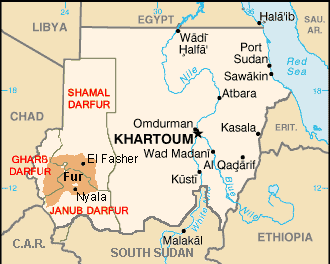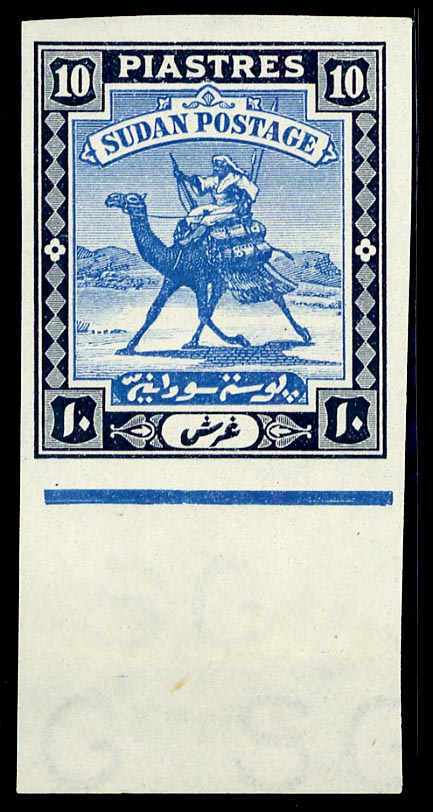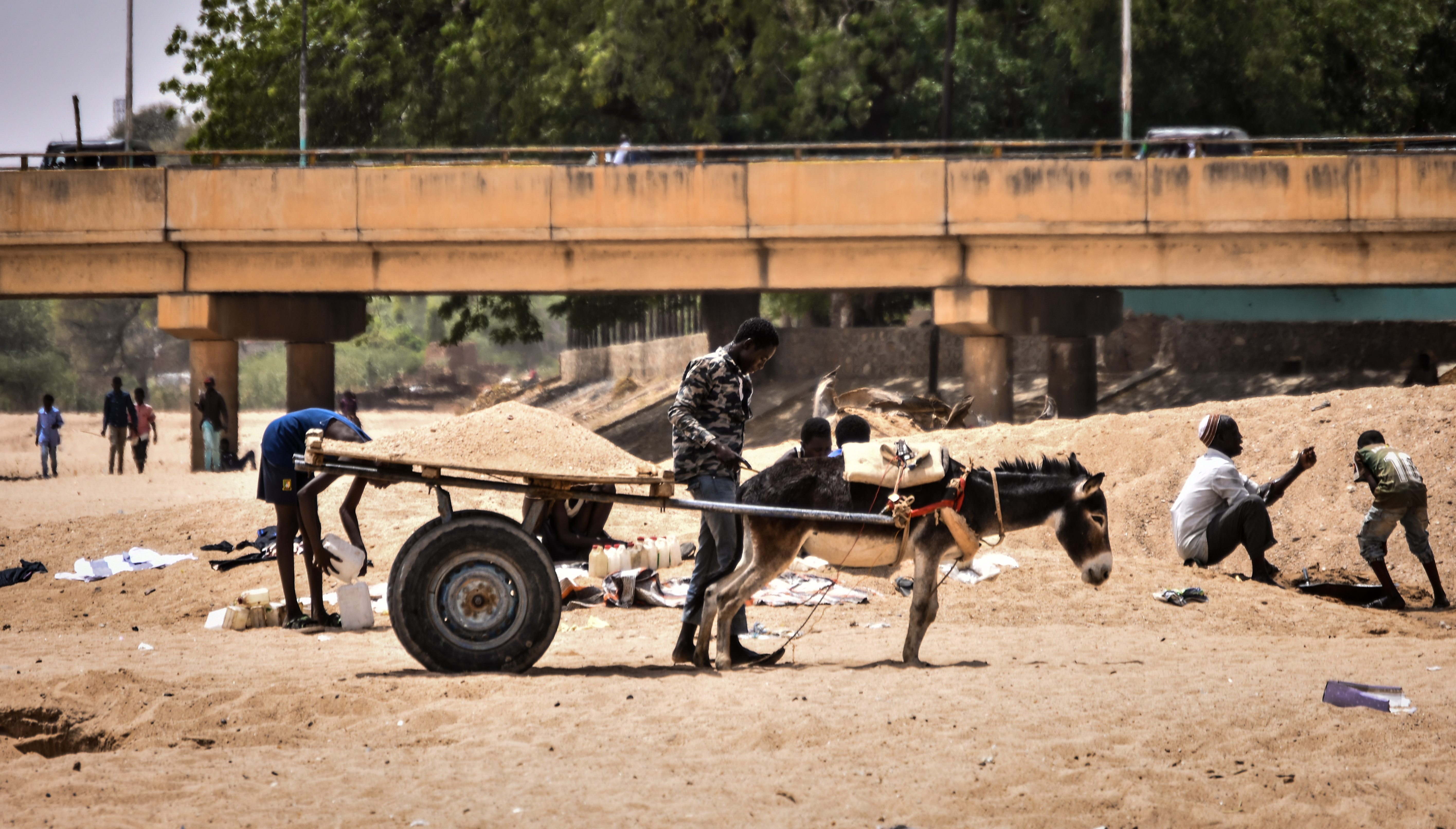|
Kimr
Kimr or Gimr is an ethnic group in West Darfur in Sudan and Chad. They speak Gimr, a dialect of Tama, a Nilo-Saharan language. The population of this ethnicity possibly is below 10,000. One 1996 source puts the population at over 50,000. History Historically, the Kimr have been located between the Sultanate of Darfur and the Sultanate of Wadai. They became tributaries to Wadai from the early 17th century to the 1874. The Ottomans conquered the region in 1874 via Egypt and the Kimr paid tribute to them until 1882. From that time until 1910, the Kimr suffered from armies of Masalits, Furs, the French, and the Mahdists. After the establishment of the Anglo-Egyptian Sudan, the Kimr nobility were incorporated into the new administrative structure. Culture The Kimr engage in dryland farming with crops like millet being commonly cultivated. Some Kimr have opted to migrate to areas like Southern Darfur or the city of Darfur Darfur ( ; ar, دار فور, Dār Fūr, lit=Real ... [...More Info...] [...Related Items...] OR: [Wikipedia] [Google] [Baidu] |
Tama Language
Tama, or Damut, is the primary language spoken by the Tama people in Ouaddai Region, Ouaddai, eastern Chad and in Darfur, western Sudan. It is a member of the Taman languages, Taman language family. Miisiirii language, Miisiirii is often considered a dialect, though it is not particularly close. Demographics Tama is spoken by 63,000 people in Dar Tama, a well irrigated area near Guéréda that extends from Kebkebiya village to nearby Sudan. There are two nearly identical dialects, one spoken in the northern and central areas, and another one spoken in the south.Rilly, Claude. 2010. ''Le méroïtique et sa famille linguistique''. Leuven: Peeters Publishers. References External links Tama basic lexicon at the Global Lexicostatistical Database Taman languages Languages of Chad Languages of Sudan {{ns-lang-stub ... [...More Info...] [...Related Items...] OR: [Wikipedia] [Google] [Baidu] |
West Darfur
West Darfur State ( Wilāyat Ḡarb Dārfūr) is one of the states of Sudan, and one of five comprising the Darfur region. Prior to the creation of two new states in January 2012, it had an area of 79,460 km² and an estimated population of approximately 1,007,000 (2006). It borders North and Central Darfur to the east. The Chadian prefectures of Biltine and Ouaddaï lie to the west, while to the north is the prefecture of Bourkou-Ennedi-Tibesti. Al-Junaynah is the capital of the state. West Darfur has been the site of much of the ongoing Darfur conflict The War in Darfur, also nicknamed the Land Cruiser War, is a major armed conflict in the Darfur region of Sudan that began in February 2003 when the Sudan Liberation Movement (SLM) and the Justice and Equality Movement (JEM) rebel groups be .... References External linksState profile States of Sudan Darfur {{Sudan-geo-stub ... [...More Info...] [...Related Items...] OR: [Wikipedia] [Google] [Baidu] |
Sudan
Sudan ( or ; ar, السودان, as-Sūdān, officially the Republic of the Sudan ( ar, جمهورية السودان, link=no, Jumhūriyyat as-Sūdān), is a country in Northeast Africa. It shares borders with the Central African Republic to the southwest, Chad to the west, Egypt to the north, Eritrea to the northeast, Ethiopia to the southeast, Libya to the northwest, South Sudan to the south and the Red Sea. It has a population of 45.70 million people as of 2022 and occupies 1,886,068 square kilometres (728,215 square miles), making it Africa's List of African countries by area, third-largest country by area, and the third-largest by area in the Arab League. It was the largest country by area in Africa and the Arab League until the 2011 South Sudanese independence referendum, secession of South Sudan in 2011, since which both titles have been held by Algeria. Its Capital city, capital is Khartoum and its most populated city is Omdurman (part of the metropolitan area of Khar ... [...More Info...] [...Related Items...] OR: [Wikipedia] [Google] [Baidu] |
Chad
Chad (; ar, تشاد , ; french: Tchad, ), officially the Republic of Chad, '; ) is a landlocked country at the crossroads of North and Central Africa. It is bordered by Libya to the north, Sudan to the east, the Central African Republic to the south, Cameroon to the southwest, Nigeria to the southwest (at Lake Chad), and Niger to the west. Chad has a population of 16 million, of which 1.6 million live in the capital and largest city of N'Djamena. Chad has several regions: a desert zone in the north, an arid Sahelian belt in the centre and a more fertile Sudanian Savanna zone in the south. Lake Chad, after which the country is named, is the second-largest wetland in Africa. Chad's official languages are Arabic and French. It is home to over 200 different ethnic and linguistic groups. Islam (55.1%) and Christianity (41.1%) are the main religions practiced in Chad. Beginning in the 7th millennium BC, human populations moved into the Chadian basin in great numbe ... [...More Info...] [...Related Items...] OR: [Wikipedia] [Google] [Baidu] |
Sultanate Of Darfur
The Sultanate of Darfur was a pre-colonial state in present-day Sudan. It existed from 1603 to October 24, 1874, when it fell to the Sudanese warlord Rabih az-Zubayr and again from 1898 to 1916, when it was conquered by the British and integrated into Anglo-Egyptian Sudan. At its peak in the late 18th and early 19th century it stretched all the way from Darfur in the west to Kordofan and the western banks of the White Nile in the east, giving it the size of present-day Nigeria. History Origins Darfur is composed mostly of semi-arid plains that cannot support a dense population. The one exception is the area in and around the Jebal Marra mountains. It was from bases in these mountains that a series of groups expanded to control the region. The Daju and the 14th century migrants the Tunjur were the earliest powers in Darfur according to written records. The transition of power from the Daju to the Tunjur was facilitated through marriage. Eventually the Tunjur began marryin ... [...More Info...] [...Related Items...] OR: [Wikipedia] [Google] [Baidu] |
Wadai Empire
The Wadai Sultanate ( ar, سلطنة وداي ''Saltanat Waday'', french: royaume du Ouaddaï, Fur: ''Burgu'' or ''Birgu''; 1501–1912) was an African sultanate located to the east of Lake Chad in present-day Chad and the Central African Republic. It emerged in the seventeenth century under the leadership of the first sultan, Abd al-Karim, who overthrew the ruling Tunjur people of the area. It occupied land previously held by the Sultanate of Darfur (in present-day Sudan) to the northeast of the Sultanate of Baguirmi. History Origins Prior to the 1630s, Wadai, also known as Burgu to the people of Darfur, was a pre-Islamic Tunjur kingdom, established around 1501. The Arab migrants to the area which became Wadai claimed to be descendants of the Abbasid Caliphs, specifically from Salih ibn Abdallah ibn Abbas. Yame, an Abbasid leader, settled with Arab migrants in Debba, near the future capital of Ouara (Wara). In 1635, the Maba and other small groups in the region rallied t ... [...More Info...] [...Related Items...] OR: [Wikipedia] [Google] [Baidu] |
Masalit People
The Masalit (Masalit: ''masala/masara''; ar, ماساليت) are an ethnic group inhabiting western Sudan and eastern Chad. They speak the Masalit language Overview The Masalit primarily live in Geneina, the capital of west Darfur, a few thousand of them live in Al Qadarif (East Sudan, in parts of the southern Janub Darfur about 20,000 state. According to ''Ethnologue'', there were 440,000 total Masalit speakers as of 2011. Of these, 350,000 inhabited Sudan. Masalit traditions trace their original homeland to Tunisia. Passing through Chad, they eventually settled in the Sudan vicinity. The Masalit are also known as the Kana Masaraka/Masaraka, Mesalit, and Massalit. They are primarily subsistence agriculturalists, cultivating peanuts and millet. Further south in their territory, they grow various other crops, including sorghum. The typical Masalit dwelling is conical in shape, and constructed of wood and thatch. Most Masalit today adhere to Islam, which they first adopted in th ... [...More Info...] [...Related Items...] OR: [Wikipedia] [Google] [Baidu] |
Fur People
The Fur (Fur: ''fòòrà'', Arabic: فور ''Fūr'') are an ethnic group predominantly inhabiting western Sudan. They are concentrated in the Darfur region, where they are the largest ethnic group.Gettleman, Jeffrey, "Chaos in Darfur on rise as Arabs fight with Arabs", news article, ''The New York Times'', September 3, 2007, pp 1, A7 They speak the Fur language, which belongs to the Nilo-Saharan family. Overview The Fur are the largest ethnic group in the Darfur region of western Sudan. They are also sometimes referred to by the names Fora, Fordunga, Furawi, Konjara, or Kungara. They are an active agricultural people and may also herd cattle. Some Fur families who have accumulated a substantial cattle herd developed a more nomadic lifestyle like that of their herding neighbors, the Baqqara (Baggara) Arabs. Culturally, those cattle-herding Fur are now considered to be Baqqara. The Fur are nominally Sunni Muslims following the Maliki school of Islamic law. They are a Wester ... [...More Info...] [...Related Items...] OR: [Wikipedia] [Google] [Baidu] |
Mahdist State
The Mahdist State, also known as Mahdist Sudan or the Sudanese Mahdiyya, was a state based on a religious and political movement launched in 1881 by Muhammad Ahmad bin Abdullah (later Muhammad al-Mahdi) against the Khedivate of Egypt, which had ruled the Sudan since 1821. After four years of struggle, the Mahdist rebels overthrew the Ottoman-Egyptian administration and established their own "Islamic and national" government with its capital in Omdurman. Thus, from 1885 the Mahdist government maintained sovereignty and control over the Sudanese territories until its existence was terminated by the Anglo-Egyptian forces in 1898. Mohammed Ahmed al-Mahdi enlisted the people of Sudan in what he declared a jihad against the administration that was based in Khartoum, which was dominated by Egyptians and Turks. The Khartoum government initially dismissed the Mahdi's revolution; he defeated two expeditions sent to capture him in the course of a year. The Mahdi's power increased, and his ... [...More Info...] [...Related Items...] OR: [Wikipedia] [Google] [Baidu] |
Anglo-Egyptian Sudan
Anglo-Egyptian Sudan ( ar, السودان الإنجليزي المصري ') was a condominium of the United Kingdom and Egypt in the Sudans region of northern Africa between 1899 and 1956, corresponding mostly to the territory of present-day Sudan and South Sudan. Legally, sovereignty and administration were shared between both Egypt and the United Kingdom, but in practice the structure of the condominium ensured effective British control over Sudan, with Egypt having limited, local power influence in reality. In the mean time, Egypt itself fell under increasing British influence. Following the Egyptian Revolution of 1952, Egypt pushed for an end to the condominium, and the independence of Sudan. By agreement between Egypt and the United Kingdom in 1953, Sudan was granted independence as the Republic of the Sudan on 1 January 1956. In 2011, the south of Sudan itself became independent as the Republic of South Sudan. In the 19th century, whilst nominally a vassal state of the ... [...More Info...] [...Related Items...] OR: [Wikipedia] [Google] [Baidu] |
Dryland Farming
Dryland farming and dry farming encompass specific agricultural techniques for the non-irrigated cultivation of crops. Dryland farming is associated with drylands, areas characterized by a cool wet season (which charges the soil with virtually all the moisture that the crops will receive prior to harvest) followed by a warm dry season. They are also associated with arid conditions, areas prone to drought and those having scarce water resources. Process Dryland farming has evolved as a set of techniques and management practices used by farmers to continually adapt to the presence or lack of moisture in a given crop cycle. In marginal regions, a farmer should be financially able to survive occasional crop failures, perhaps for several years in succession. Survival as a dryland farmer requires careful husbandry of the moisture available for the crop and aggressive management of expenses to minimize losses in poor years. Dryland farming involves the constant assessing of the amo ... [...More Info...] [...Related Items...] OR: [Wikipedia] [Google] [Baidu] |
South Darfur
South Darfur State ( ar, ولاية جنوب دارفور Wilāyat Ǧanūb Dārfūr; Janob Darfor) is one of the wilayat or states of Sudan. It is one of the five states that compose the region of Darfur in western Sudan. Overview Prior to the creation of two new states in the Darfur region in January 2012, South Darfur had an area of and an estimated population of approximately 2,890,000 (2006). Nyala The lowland nyala or simply nyala (''Tragelaphus angasii'') is a spiral-horned antelope native to southern Africa. It is a species of the family Bovidae and genus ''Tragelaphus'', previously placed in genus ''Nyala''. It was first described i ... is the capital of the state. The State was affected by the 2010 Sahel famine. References External linksGovernment of South Darfur [...More Info...] [...Related Items...] OR: [Wikipedia] [Google] [Baidu] |




